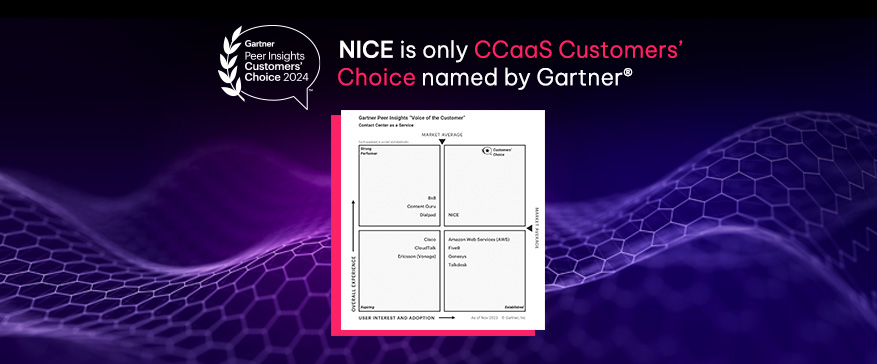What is Performance Management?
Performance management is a vital organizational process that helps monitor, evaluate, and enhance employee performance. Performance management is important because it helps achieve organizational goals, provides constructive feedback, and supports employee development. It entails setting clear objectives, providing consistent feedback, and aligning individual efforts with the broader goals of the organization. Implementing a robust performance management system can significantly boost productivity, identify areas for improvement, and reward high performers.
This guide offers an in-depth exploration of performance management, covering its essential components, best practices for effective implementation, and the advantages of utilizing performance management software. We will also differentiate between performance management and performance appraisal while examining future trends that are shaping this field. Dive in to gain valuable insights into this crucial practice.
Understanding Performance Management
Performance management is a structured approach that involves setting goals, tracking progress, providing feedback, and assessing performance as part of the performance management process to maximize individual and organizational productivity. This comprehensive strategy ensures that individual performance aligns with organizational objectives, with everyone working towards common goals.
Effective performance management is crucial as it establishes a framework for measuring and enhancing employee performance. Clear performance expectations are crucial as they help employees understand their roles and responsibilities, boosting motivation and engagement. Clear expectations and regular feedback enable employees to understand their roles and responsibilities, boosting motivation and engagement.
Implementing performance management brings numerous benefits. It facilitates better communication and alignment between managers and employees. Through regular check-ins and performance reviews, managers can address concerns, offer guidance, and ensure employees have the resources they need to succeed.
Moreover, performance management helps identify top performers, recognize their achievements, and offer suitable rewards and career development opportunities. It also highlights areas needing improvement, addresses performance issues, and supports targeted training and development programs.
By adopting performance management, organizations can foster a culture of continuous improvement, where employees are encouraged to set challenging goals, seek feedback, and strive for excellence. This leads to enhanced employee satisfaction, productivity, and overall organizational success.
Key Components of Performance Management
Performance management is a holistic process comprising several key components crucial for effectively assessing and improving employee performance. These components form the backbone of a successful performance management system. An effective performance management system ensures that these components work together seamlessly to enhance employee performance and organizational success. Let’s delve into the three main components:
1. Performance Management Cycle: This cycle outlines the steps involved in managing employee performance, typically including goal setting, performance planning, ongoing monitoring, performance evaluation, and development planning. This cyclical process ensures that employees understand their responsibilities, receive regular feedback, and have opportunities to enhance their performance.
2. Objectives and Goal Setting: Clear and measurable objectives are fundamental to performance management. Well-defined goals align employee efforts with organizational objectives and provide direction. Effective goal setting involves creating SMART goals (Specific, Measurable, Achievable, Relevant, and Time-bound) that are challenging yet attainable. Regularly reviewing and adjusting goals keeps employees motivated and focused on achieving desired outcomes.
3. Performance Evaluation and Feedback: Evaluating employee performance and providing timely feedback are essential for continuous improvement. Performance evaluations measure progress towards goals, assess skills, strengths, and areas for development. Feedback should be constructive, specific, and actionable, highlighting both achievements and areas needing improvement. Regular feedback sessions help employees understand expectations, address performance gaps, and foster professional growth.
Integrating these key components into your performance management practices can cultivate a culture of continuous improvement, enhance employee engagement, and drive organizational success.
Best Practices for Effective Performance Management
Effective performance management is crucial for maximizing employee productivity and achieving business goals. Implementing best practices can help create a culture of continuous improvement and development. Here are some key practices for effective performance management:
Clear and measurable performance metrics: Setting clear and measurable goals is essential. Defining specific metrics helps employees understand expectations, driving performance and accountability. Ensuring that performance metrics align with organizational objectives is key.
Regular performance reviews and check-ins: Conducting regular reviews and check-ins allows managers to provide feedback, recognize achievements, and address performance gaps. These sessions offer opportunities to discuss individual goals, progress, and areas for improvement. Adopting a continuous performance management process, which includes regular check-ins and frequent feedback sessions, can significantly enhance employee development and organizational growth. Regular communication builds trust and fosters a collaborative relationship between managers and employees.
Continuous employee development and support: Performance management should go beyond evaluations and feedback sessions. Investing in continuous employee development and support is essential, including providing training, mentoring, and resources to enhance skills and knowledge. Supporting employee growth creates a motivated workforce equipped to meet evolving business demands.
Implementing these best practices can lead to improved employee engagement, productivity, and overall organizational performance. Effective performance management lays the foundation for a high-performing and successful workforce.
Implementing Performance Management Software
Performance management software is a valuable tool for organizations aiming to streamline evaluation processes and boost employee productivity. With numerous features and benefits, choosing and implementing the right software is critical for achieving organizational success.
Performance management tools can support organizational growth by tracking individual performance and recommending performance actions.
A key feature of performance management software is the automation and digitization of the evaluation process, eliminating manual paperwork and enabling efficient tracking and monitoring of performance. The software often includes customizable templates and evaluation criteria, allowing organizations to align the evaluation process with their unique goals and objectives.
Implementing performance management software offers several benefits. It promotes transparency and fairness in evaluations by eliminating biases and ensuring consistent standards, fostering a positive work culture and boosting morale.
The software also facilitates real-time feedback and continuous performance monitoring. Managers can provide timely feedback, recognize achievements, and address areas for improvement, enhancing employee engagement and productivity.
When selecting performance management software, consider factors such as the size of your organization, specific needs and goals, and the software’s scalability. User-friendliness and compatibility with existing systems are also crucial for smooth integration.
Integration and implementation considerations are vital for successful deployment. Involve key stakeholders, such as HR personnel and department managers, in the planning and implementation process. Provide adequate training and support to ensure a seamless transition and maximize user adoption.
In conclusion, performance management software can revolutionize how organizations evaluate and enhance employee performance. Leveraging its features and benefits can promote transparency, improve productivity, and foster a culture of continuous improvement.
Performance Management vs Performance Appraisal
Performance management and performance appraisal are integral components of a comprehensive evaluation system, but they have significant differences.
A comprehensive performance management program includes ongoing communication, goal setting, coaching, and development opportunities.
Performance appraisal is a periodic evaluation of an employee’s performance against predetermined goals and objectives. It typically involves a formal review process where supervisors assess work, provide feedback, and assign a rating or score. The focus is often on past performance and is primarily used for administrative purposes such as determining promotions, salary increases, or disciplinary actions.
In contrast, performance management is a continuous and proactive process that extends beyond traditional appraisals. It aims to improve performance, enhance growth, and align goals with organizational objectives. Performance management involves ongoing communication, goal setting, coaching, and development opportunities. It focuses on evaluating past performance and identifying improvement areas, providing support, and fostering engagement.
Adopting a performance management approach creates a culture of continuous improvement and development. It empowers employees to take ownership of their performance, encourages open communication, and fosters a collaborative work environment. Performance management helps employees understand their strengths and weaknesses, set meaningful goals, and receive regular feedback to improve their skills and capabilities.
Aligning performance management with organizational goals is crucial for driving success and achieving desired outcomes. When practices align with strategic objectives, employees understand how their contributions impact overall success, creating a sense of purpose, increasing motivation, and promoting a shared vision among employees.
Future Trends in Performance Management
Performance management is evolving to meet the changing needs of organizations and employees. Evaluating and updating the current performance management process is essential to ensure it meets the evolving needs of the organization. Several trends are shaping the future of this field.
A key trend is the emergence of new technologies. Organizations are leveraging artificial intelligence (AI), machine learning, and data analytics to enhance performance management processes. These technologies enable the gathering and analysis of large data volumes to gain insights into performance, identify improvement areas, and make data-driven decisions. Leveraging emerging technologies can streamline processes and provide more accurate and timely feedback to employees. A well-defined performance management strategy leverages HR technology and continuous monitoring to improve efficiency and effectiveness.
Another trend is the shift towards continuous performance management. Traditionally, performance management involved annual or bi-annual reviews. However, organizations are now adopting a more continuous feedback approach, with regular performance discussions throughout the year. Continuous performance management allows for real-time feedback, goal setting, and coaching, keeping employees engaged and motivated. This approach aligns with modern workforce expectations, valuing frequent feedback and growth opportunities. Modern performance management systems incorporate continuous feedback and coaching sessions to empower employees and enhance engagement.
With the rise of remote work, organizations are adapting performance management processes to suit remote environments. Remote work presents unique challenges in communication, collaboration, and performance monitoring. To address these challenges, organizations are leveraging technology solutions for remote performance management, such as virtual reviews, online goal setting tools, and remote feedback platforms. Adapting performance management to remote work ensures remote employees receive the same support, feedback, and development opportunities as in-office counterparts.







